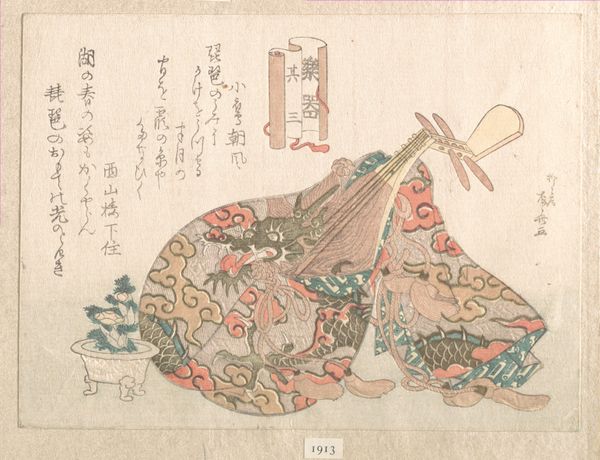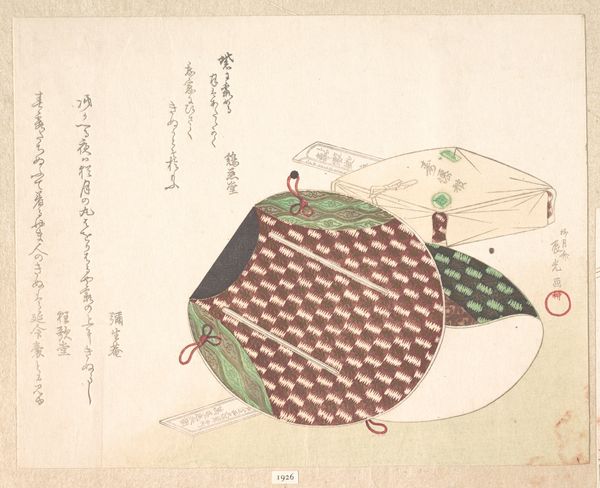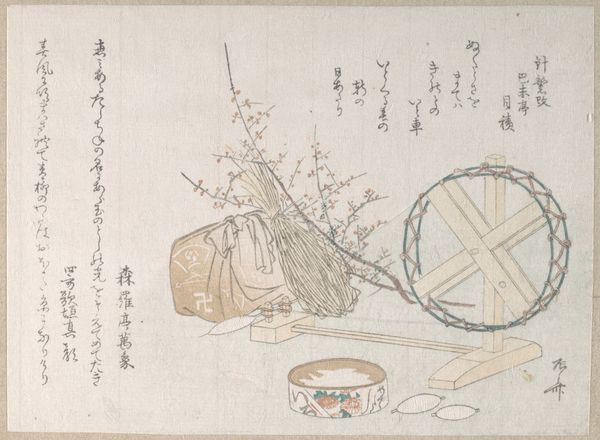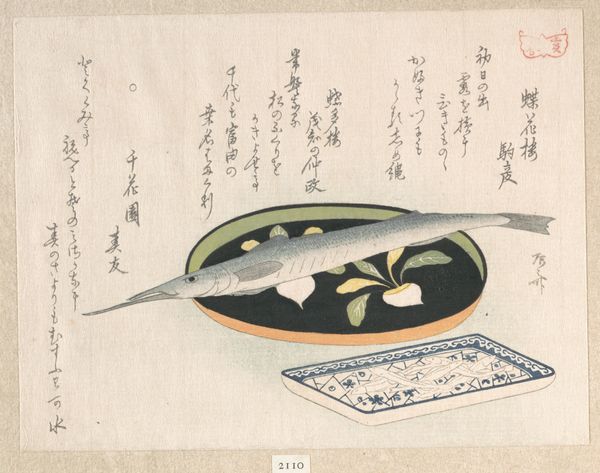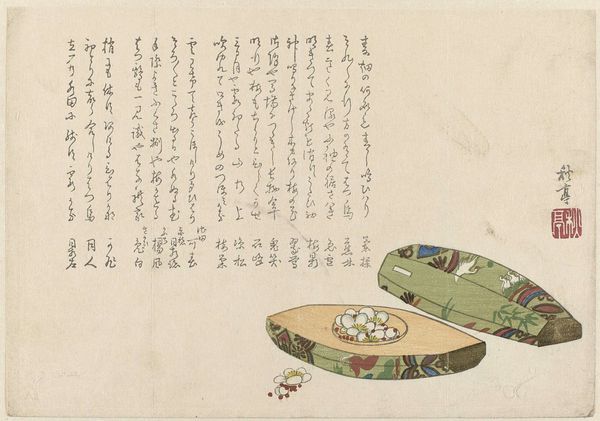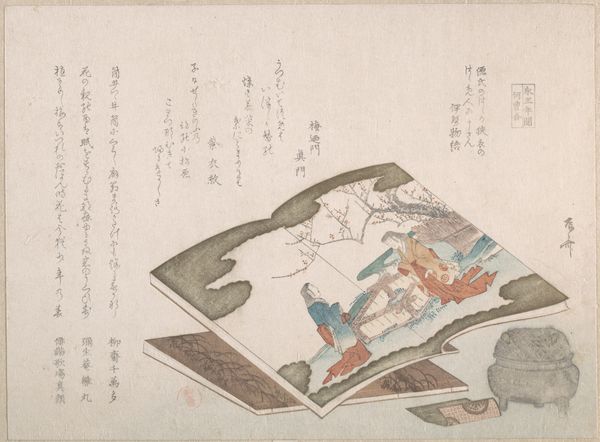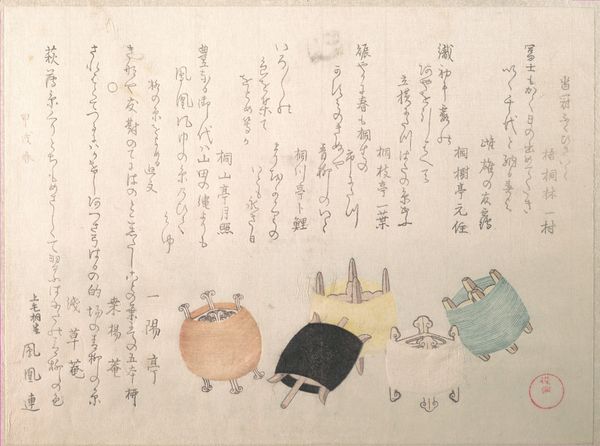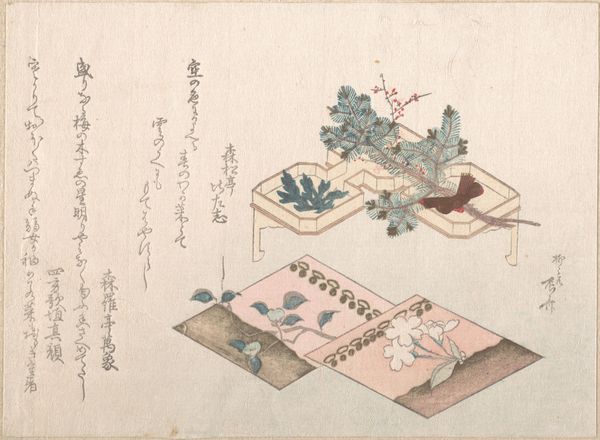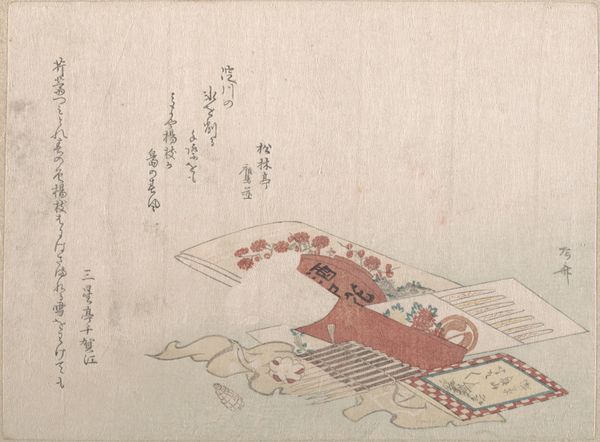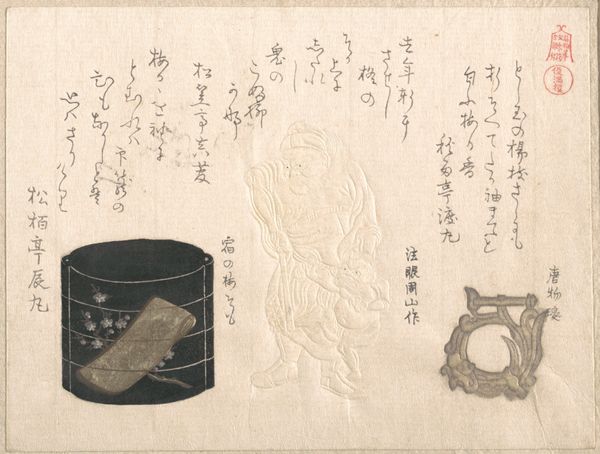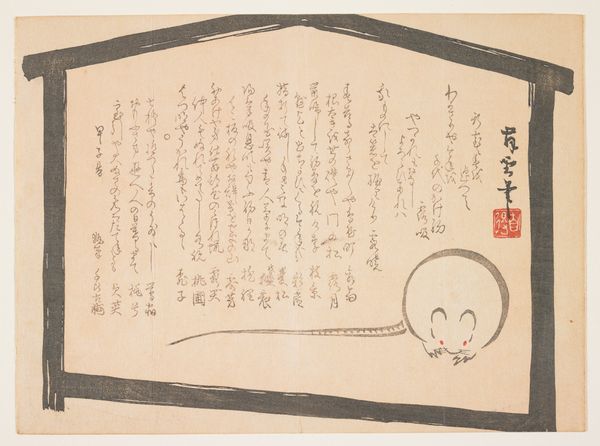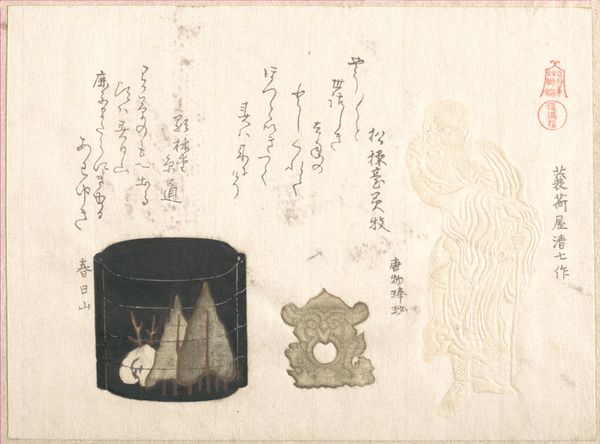
print, woodblock-print
# print
#
asian-art
#
landscape
#
ukiyo-e
#
figuration
#
woodblock-print
#
orientalism
Dimensions: 5 1/2 x 7 1/2 in. (14 x 19.1 cm)
Copyright: Public Domain
Curator: So, here we have "Insect Catcher and Potted Herbs," a 19th-century woodblock print by Ryūryūkyo Shinsai. Editor: It’s a charming, somewhat subdued image. The contrast between the almost geometrical container in the background and the intricate woven basket is interesting. How do you interpret this work? Curator: For me, the piece becomes a site to question the Western gaze of Orientalism and the Western understanding of Eastern cultures, but more explicitly I ask "who is watching who?" The inscription included points towards the idea of a communal aspect of writing and observation, which makes me think about spectatorship in relation to class. Does it speak to those of a certain class, culture or even level of visual access? Editor: Class? Could you elaborate on the communal aspect of observation? Curator: Notice how text intertwines into the overall composition of the piece. The script that makes the image a site for collective activity. Given the inscription about "insect catcher" is this another method of subjugation or observation onto those outside this specific group, culture, or class. Who benefits from capturing, observing, classifying? Does the act reinforce existing power structures? What do you make of that? Editor: That’s a really interesting take! I hadn’t considered how the piece’s cultural context implicates the viewer in such active terms, so for the piece, I see that the figures exist in both text and within the composition. They appear both there but also performative. Curator: Precisely, now start thinking of how this relates back to visual spectatorship within power and social settings. So, what have you learned about the dialogue between seeing and assuming? Editor: This has encouraged me to reconsider art historical and social contexts, and now it makes me consider how visual perspective and identity in general implicates more broadly within a conversation.
Comments
No comments
Be the first to comment and join the conversation on the ultimate creative platform.
